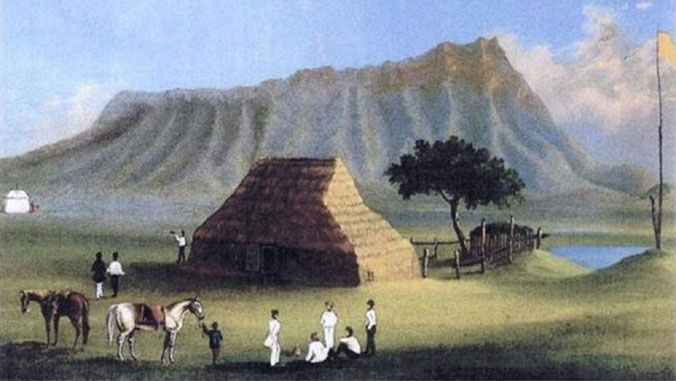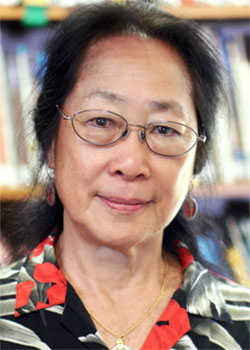
The COVID-19 pandemic has prompted educators in Hawaiʻi to provide a historical look at contagious diseases in Hawaiʻi and the Pacific. An interdisciplinary curriculum, COVID-19, the Latest Hawaiian Epidemic: Educating for Health, Responsibility, and Resilience Through a Place-Based, Cultural Lens, that compares and contrasts Hawaiian historical timelines and science phenomena associated with COVID-19, is the brainchild of University of Hawaiʻi at Mānoa College of Education Curriculum Studies Professor Pauline Chinn.

The curriculum has multiple purposes: to understand COVID-19 in historical contexts, examine leaders’ actions in a crisis, and teach students about ways to slow the spread of SARS-CoV-2, the virus causing COVID-19. Chinn, graduate students Kaleolani Hanohano and Alison Yasuoka, and Hawaiian translator graduate assistants Riley Wells and Kyle Nakatsuka, developed a series of lessons that include: hands-on activities, simulations, models, metrics, interactive discussions, historical resources, Hawaiian language newspaper articles, and up-to-date information on COVID-19 that can be used in schools and communities.
Hanohano’s lesson focuses on Princess Liliʻuokalani’s 1881 quarantine of Oʻahu that stopped the spread of smallpox to other islands. Liliʻuokalani’s decisive action to shut down parts of the economy in favor of health is consistent with the Hawaiian Kingdom’s response to introduced diseases and cultural practices embedded in kapu aloha.
The COVID-19 curriculum and a series of interactive workshops are made possible with support from a National Science Foundation (NSF) award for teacher leadership and place-based curriculum development. With support from Papa Ola Lokahi and NSF, Yasuoka and Wells also created the Kūpaʻa Collective website to empower community members with the science, public health, educational and community knowledge to move beyond COVID-19 toward healthy, resilient futures.
Education-public health collaboration
The potential of K–12 educators as community health partners led to COVID-19 presentations with Alika Maunakea, an associate professor at the John A. Burns School of Medicine (JABSOM)’s Department of Anatomy, Biochemistry & Physiology and the Institute for Biogenesis Research, his aunt Kukui Maunakea-Forth, founder and executive director of MAʻO Organic Farms, and Ruben Juarez, professor in the College of Social Sciences’ economics department and a research fellow in the UH Economic Research Organization.
In an effort to address COVID-19 testing among underserved and/or vulnerable populations, a team consisting of: May Okihiro, an associate pediatrics professor at JABSOM, Marjorie Mau, a professor at JABSOM’s Center for Native and Pacific Health Disparities Research, Maunakea, Juarez and Chinn, will support a community-led program called the Pacific Alliance Against COVID-19 (PAAC). PAAC will empower educators and students as community health workers to assess their ʻohana‘s risk for COVID-19 by age, ethnicity, gender, essential service work and health risk factors, and more effectively connect with public health services, especially those provided by the AHARO Community Health Centers including Waiʻanae Coast Comprehensive Health Center, Waimānalo Health Center, Bay Clinic and Hāmākua-Kohala Health Center on Hawaiʻi Island, and Molokaʻi Health Center.
Teachers and students can play an important role in public health education. With public health partners, they can provide the fine-grained health monitoring that alerts public health workers to potential COVID-19 cases and clusters that can spread to the wider community and create outbreaks that could return Hawaiʻi to further restrictions.

